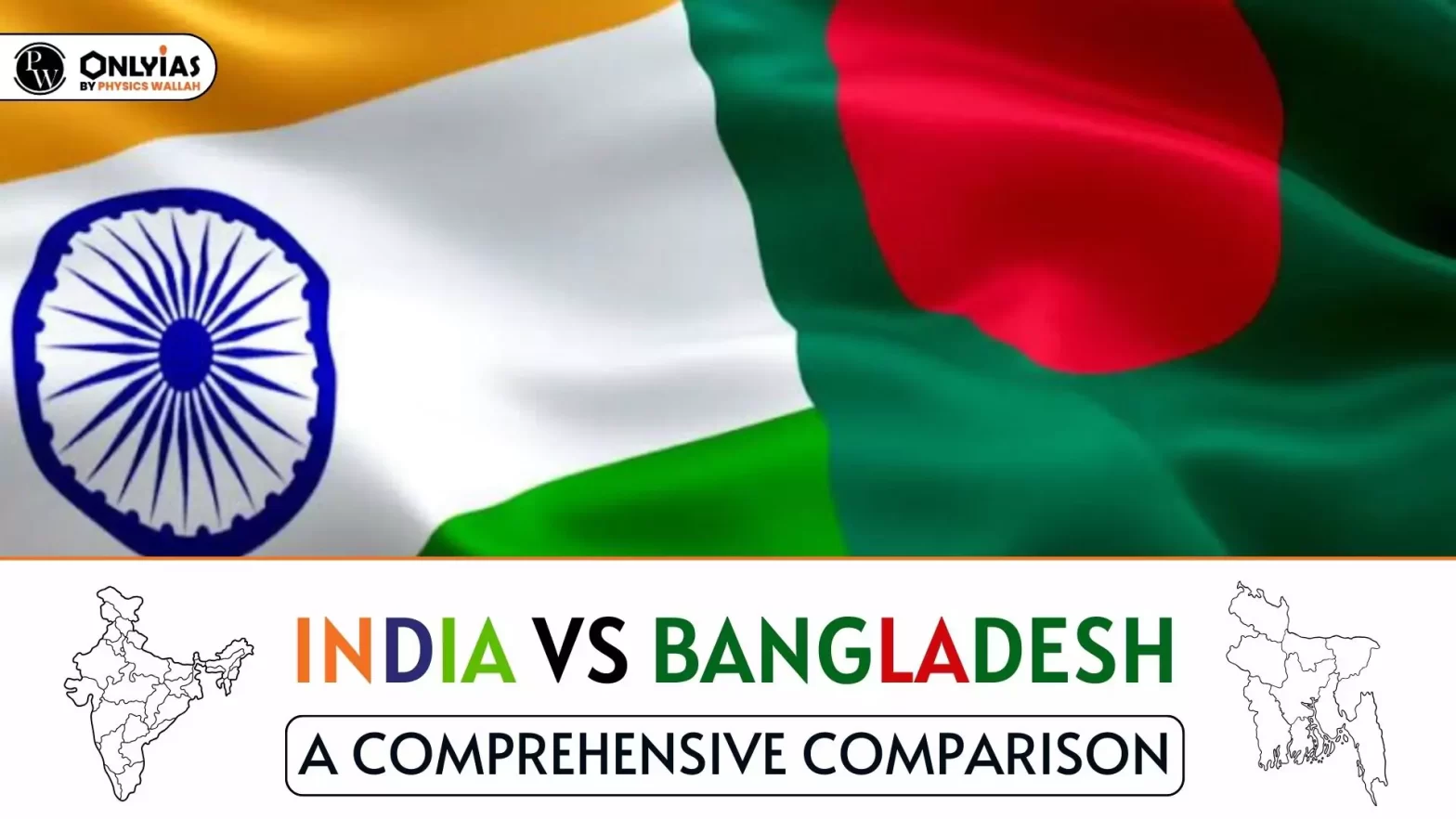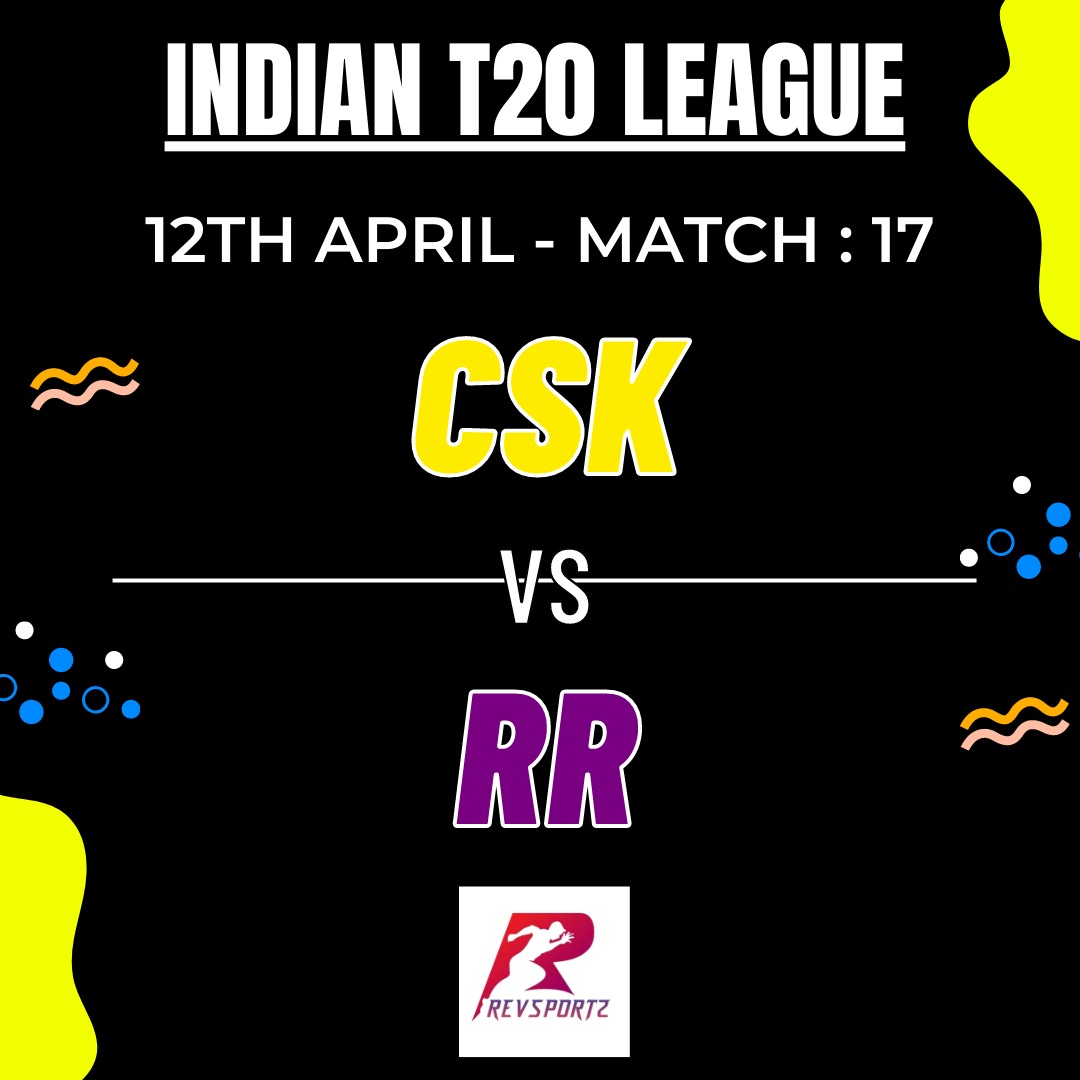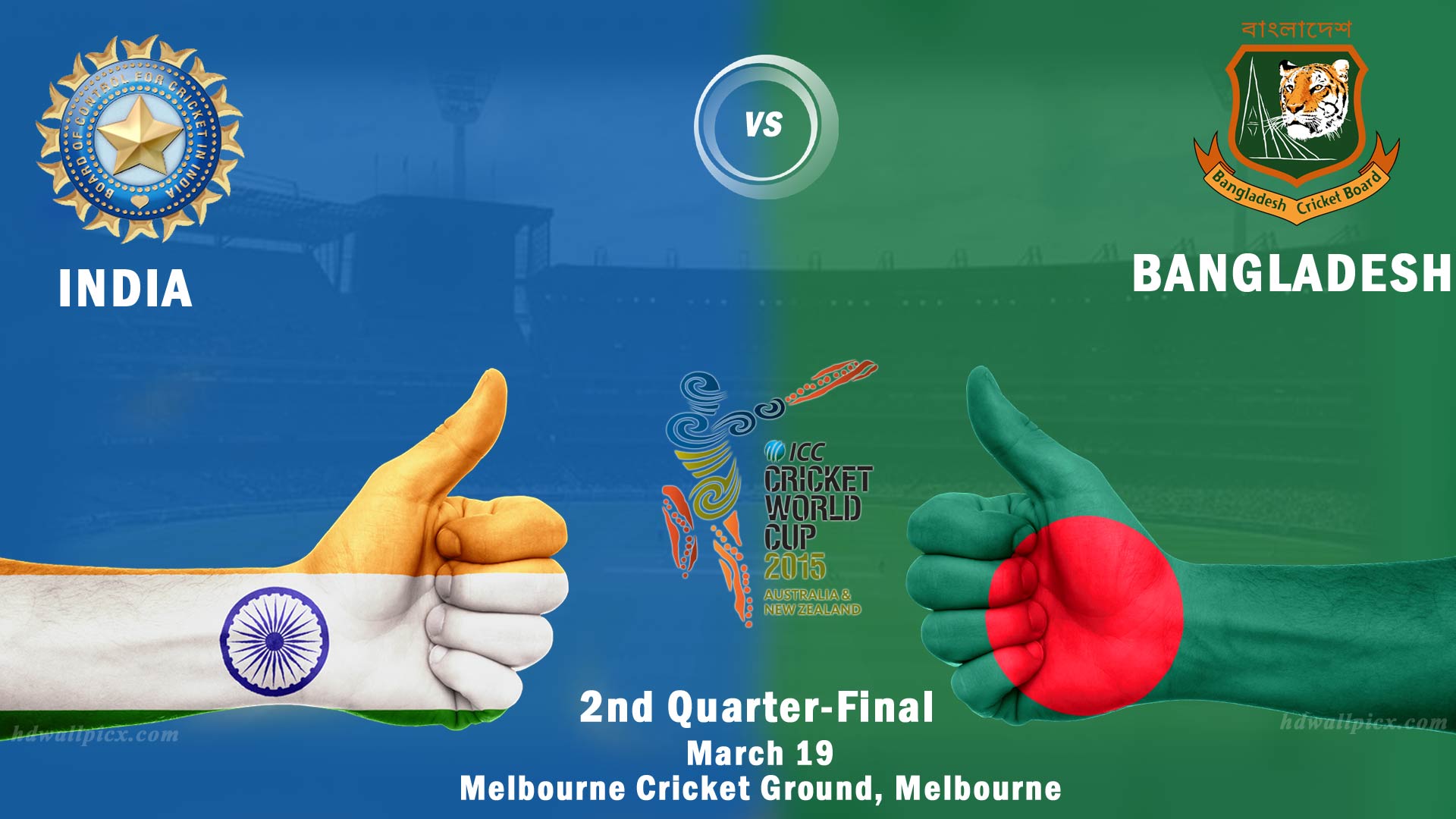India Versus Bangladesh - A Look At India's Core
When folks talk about the broader region, particularly when the conversation turns to something like India versus Bangladesh, it’s really helpful to get a good sense of India itself. India, you see, is a country with a rather long story, stretching back through time, and it has a way of doing things that’s pretty much its own. It's actually a place that holds a big spot on the map, and it plays a pretty big part in how things unfold across South Asia, which is, you know, something worth thinking about.
The land and the people there tell a tale of many different ways of life all living together. It’s a place where you find thousands of different groups of people, each with their own ways, all under one big umbrella. This kind of variety, you know, it makes India a pretty interesting study, especially when you consider its place next to its neighbors. It’s a country that, in some respects, truly shows what it means to be a melting pot, and that’s a big part of its character.
So, as we talk about this whole "India versus Bangladesh" idea, it helps to keep in mind what India is at its very core. It's a country that’s been doing things its own way for a good while, with a system of government that gives its people a say. This deep history and its current setup really shape how it interacts with the world, and that includes its relationship with places like Bangladesh, making it, you know, a pretty important piece of the regional puzzle.
Table of Contents
- What Makes India What It Is?
- India's Foundational Details - India Versus Bangladesh
- How Does India's Government Shape the Region, Especially in India Versus Bangladesh?
- What Does India's Population Growth Mean for India Versus Bangladesh?
- How Does India's Geography Play a Role in India Versus Bangladesh?
- A Look at India's Rich Past
- The Story of India's People
- India's Place on the World Map
What Makes India What It Is?
India, for a good long while now, has been set up as a federal republic, which means it has a way of governing itself that gives power to different parts of the country, and it’s all done through a system where people get to choose their leaders. Since the year 1950, it’s been working with this democratic parliamentary way of running things, which, you know, is a pretty significant choice for a country of its size. This setup, where people have a voice, is a big part of what makes India what it is, and it really sets the tone for how things are done there.
It's actually a constitutional republic, which means there are rules, written down, that everyone follows, and these rules guide how the country is run. This kind of system is there to represent a really big group of people, a population that is, to be honest, incredibly varied. You see, this population is made up of thousands of different groups of people, each with their own backgrounds and ways of life. So, in a way, the government has to work for a lot of different folks, and that’s a pretty big job, really.
India is, in some respects, one of the oldest civilizations you can find anywhere in the world. It has a history that goes back a very long time, and that history has given it a culture that’s, you know, really full of different colors and patterns, like a kaleidoscope. This rich cultural background is a huge part of what makes India special, and it’s something that has been built up over, well, centuries. It’s pretty amazing when you think about how much history is packed into that one place.
The country, in its essence, is a place that brings together a lot of different things: different people, different kinds of land, and even different weather patterns. It's the world's largest democracy, meaning more people get to vote and have a say in their government than anywhere else. This mix of so many different elements, from the kinds of places you find there to the people who call it home, makes India a truly interesting and, you know, very diverse place to look at.
India's Foundational Details - India Versus Bangladesh
To get a clear picture of India, especially when you're thinking about it in the context of something like India versus Bangladesh, it helps to have some basic facts. These details give you a solid groundwork for understanding its scale and its makeup. You can, for instance, look at its size, its number of people, and how it’s organized. These are the kinds of things that really give you a sense of what the country is all about, and they’re pretty important when you’re trying to compare it or understand its role in a region.
The way the country is put together, with its various parts, is also pretty telling. It’s not just one big block of land; it’s divided up into smaller pieces, each with its own local way of doing things. This structure, you know, allows for a lot of local flavor and local choices, even within the larger national framework. It’s a system that tries to keep things running smoothly for a very large and varied group of people, which, as you can imagine, is quite a task.
So, when you consider India in any discussion, particularly one that touches on India versus Bangladesh, these foundational details become pretty useful. They help to explain why India acts the way it does, why it has the kind of influence it does, and why it’s such a significant player in its part of the world. It's, you know, the basic information that gives you a starting point for any deeper thoughts.
| Detail | Description |
|---|---|
| Political System | Federal republic, democratic parliamentary system, constitutional republic since 1950. |
| Current Population (2024) | Estimated 1.4 billion people. |
| Population Growth (Historical) | Grew from 361 million in 1950. |
| Anticipated Population Status | Expected to become the world's most populous nation by 2028 (UN estimates). |
| Total Land Area | About 3,287,263 square kilometers. |
| Global Ranking by Area | 7th largest country. |
| Global Ranking by Population | 2nd most populated country (historically), now the most populous. |
| Geographical Location | Greater part of South Asia, peninsular country. |
| Surrounding Waters | Indian Ocean to the south, Arabian Sea in the southwest, Bay of Bengal in the southeast. |
| Northern Border | Himalayas. |
| Internal Divisions | Subdivided into 29 states and seven union territories. |
| Cultural Heritage | One of the oldest civilizations, rich cultural heritage, kaleidoscopic variety. |
| Diversity | Highly diverse population, geography, and climate; thousands of ethnic groups. |
How Does India's Government Shape the Region, Especially in India Versus Bangladesh?
India’s choice to be a federal republic, and to run things through a democratic parliamentary system, really does make a difference in how it sits in its part of the world. Since 1950, this way of governing has been, you know, a constant. It means that the people have a say, and that's a pretty big deal for a country that is so large and has so many different kinds of people living in it. This commitment to democracy, you see, sets a certain kind of tone for the country's interactions, even when you're thinking about something like India versus Bangladesh.
Being a constitutional republic means that there are clear rules that everyone, including those in charge, has to follow. This provides a kind of stability, which is, honestly, quite important when you're trying to keep a country with thousands of different ethnic groups all working together. The fact that India has maintained this system for so long, and that it represents such a wide array of voices, really shapes its character. It means that decisions are made through a process that, more or less, tries to include everyone, or at least many different viewpoints.
This approach to governance, where people elect their representatives and laws are made through open discussion, can influence how other countries in the region view India. It’s a system that, in a way, promotes a certain kind of openness and a certain kind of dialogue. So, when conversations turn to regional dynamics, or specifically to India versus Bangladesh, India’s democratic foundation is, you know, definitely a factor in how it’s seen and how it operates on the global stage. It’s pretty much a core part of its identity.
What Does India's Population Growth Mean for India Versus Bangladesh?
The sheer number of people living in India, and how that number has changed over time, is, honestly, a pretty big piece of the puzzle when you’re thinking about the region, and especially when you bring up India versus Bangladesh. Back in 1950, India’s population was around 361 million people. That was, you know, a lot of folks even then. But fast forward to today, and that number has grown, quite a bit actually, to an estimated 1.4 billion people in 2024. That’s a really big jump, and it means India is now the country with the most people in the entire world.
The United Nations, for instance, had actually estimated that India’s population would probably go past China’s around 2028, making it the most populous nation then. But it seems like that has already happened, or is happening, even sooner. This kind of population size, and its continued growth, has all sorts of effects, both inside India and for its neighbors. It means there are a lot of people who need homes, jobs, and food, and that, you know, creates a lot of activity and a lot of needs.
So, when you consider the dynamics between India and Bangladesh, or any country in the area, India’s massive and growing population is, more or less, always a part of the picture. It influences things like trade, migration, and even how resources are shared. It’s a really significant fact that shapes so much of what happens in that part of the world. It’s, you know, a very powerful force that can’t really be ignored when you’re looking at regional relationships.
How Does India's Geography Play a Role in India Versus Bangladesh?
India’s location and its physical features are, honestly, a huge part of what makes it unique, and these things definitely play a role in any discussion, particularly when you’re talking about India versus Bangladesh. India is, you know, a country that takes up the bigger portion of South Asia. It’s shaped like a peninsula, which means it has water on three of its sides. To the south, you have the Indian Ocean, then there’s the Arabian Sea to the southwest, and the Bay of Bengal sits to the southeast. These water bodies are, in a way, like big borders that define a lot of its edges.
And then, up north, you have the Himalayas, those really tall mountains. These mountains form a kind of natural barrier, separating India from some of its northern neighbors. This mix of vast plains, coastal areas, and towering mountains means India has a really varied landscape. You can find all sorts of different environments within its borders, and that’s pretty interesting when you think about it. This varied geography, you know, affects everything from its weather to how people live and what they grow.
The sheer size of India’s land area, which is about 3,287,263 square kilometers, also makes it the seventh largest country by land size in the world. This means it has a lot of different kinds of land, from deserts to forests to fertile river valleys. So, when you’re considering the connections or differences between India and Bangladesh, India’s geography is, you know, a pretty big influence on things like shared resources, trade routes, and even how people move between places. It really shapes the whole regional setup.
A Look at India's Rich Past
India has a past that goes back a very, very long time, making it one of the oldest civilizations anywhere. This long history has given it a kind of cultural richness that is, you know, quite special. It’s like a big, colorful picture made up of many different parts, a kaleidoscopic variety of traditions and ways of life that have been passed down through generations. This deep cultural heritage is something that really defines India, and it’s something you can feel when you’re there.
The stories, the art, the ways of thinking that have developed over centuries, they all contribute to this rich background. It’s a place where different ideas and different customs have met and mixed, creating something truly unique. This long and varied history means that India has seen a lot, and it has learned a lot, and that, you know, shapes its outlook on the world and its place in it. It's pretty much a country with a very old soul.
This historical depth also plays a part in how India sees itself and how it interacts with other countries, even when you're considering something like India versus Bangladesh. The weight of its past, the achievements and the lessons learned, they all contribute to its national character. It’s a country that, in some respects, carries its history with it every day, and that’s a pretty powerful thing to consider.
The Story of India's People
The people of India tell a story of incredible variety, which is, honestly, one of the most striking things about the country. As the world's largest democracy, it has a population that is not just big in numbers, but also incredibly diverse in its makeup. You see, this population is made up of thousands of different groups of people, each with their own backgrounds, their own languages, and their own ways of life. It’s like a huge quilt made from countless different patches, all sewn together.
This kind of diversity isn't just about different kinds of people; it also shows up in the land itself and in the weather patterns across the country. From the hot, dry parts to the cool, mountainous areas, and from bustling cities to quiet villages, the people of India have adapted to all sorts of environments. This means that, in a way, the country is a living example of how many different kinds of human experience can exist side by side.
This blend of so many different people, living together under one government, is a pretty amazing thing to witness. It means that there's a constant flow of ideas and traditions, and that, you know, creates a very dynamic and lively society. So, when you think about India, especially in any regional context like India versus Bangladesh, the story of its people, with all their differences and shared experiences, is absolutely central to understanding the country.
India's Place on the World Map
When you look at a map, India really stands out, and its position on the world stage is, you know, pretty significant. It’s the seventh largest country by land area, which means it takes up a really big piece of the Earth’s surface. And when it comes to people, it’s now the most populous country in the world, with an estimated 1.4 billion people living within its borders in 2024. These two facts alone give you a sense of its scale and its importance.
Being located in southern Asia, it’s right there at the heart of a very active and important part of the globe. Its size and its number of people mean that whatever happens in India tends to have a ripple effect, not just in its immediate neighborhood but often further afield. It’s a country that, in some respects, cannot be overlooked when you're talking about global trends or regional stability. It really holds a lot of weight.
The country is also organized into many smaller parts, with 29 states and seven union territories, which helps manage such a vast area and so many people. This internal structure allows for a certain kind of local governance while still being part of the larger nation. So, when you think about India’s role, whether in discussions about trade, climate, or even specific regional relationships like India versus Bangladesh, its sheer size and its place on the map are, you know, pretty fundamental to how it operates and how it’s perceived.

India Vs Bangladesh: A Comprehensive Comparison - PWOnlyIAS

INDIA vs BANGLADESH TEST - Rev Sportz

India Vs Bangladesh 2024 - Ingrid Steffi